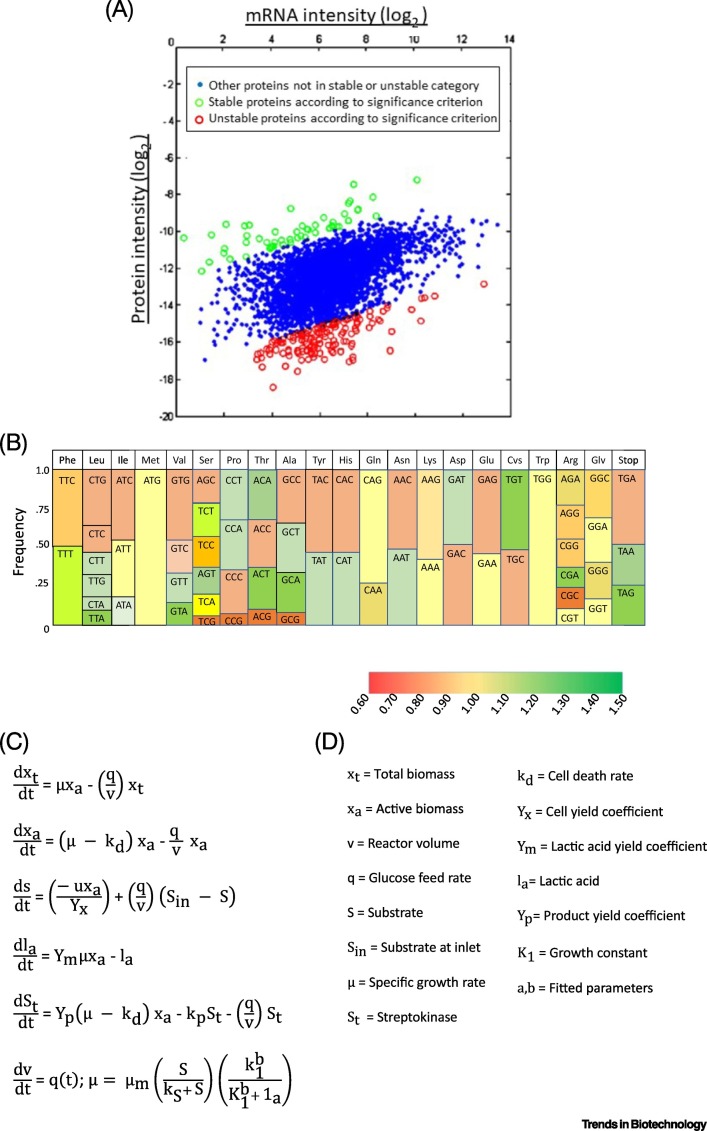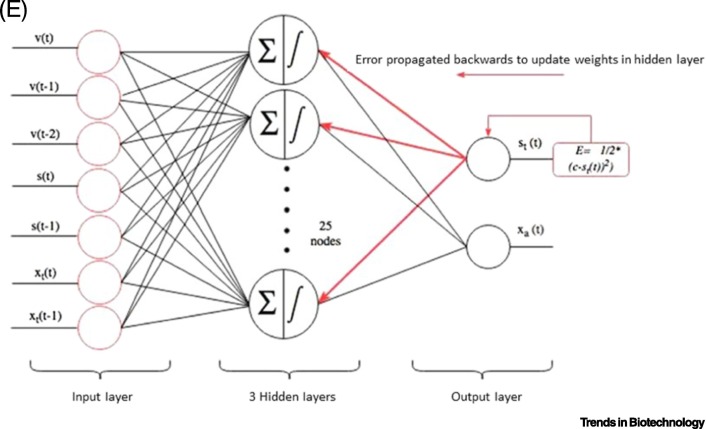Figure 3.
Representation of Transcriptomic and Proteomic Data, Phenomenological Model and Data Analytic Methods.
(A) Protein versus RNA intensities for Chinese hamster ovary (CHO) cells; (B) codon frequency for CHO cells. It is important to optimize the codons of human proteins to increase their expression; (C) equations for a phenomena-logical model of microbial production of streptokinase based on the original concepts of specific growth rates, as first proposed by Monod in 1941 [47]; the variables represented in this formulation of ordinary differential equations are based on active (xa) and total (xt) microbial biomass, as listed in (D); (E) depiction of error back propagation in a deep learning model developed to estimate important parameters in the fermentation of streptokinase. The semisupervised deep neural network-based soft sensor has a superior overall performance to that of support vector regression specifically for cases with a larger unlabeled dataset. Reproduced, with permission, from [51] (A), [44] (B), and [46] (D,E).


